Review: Google Nexus 5X
Nov 2, 2015, 10:00 AM by Eric M. Zeman
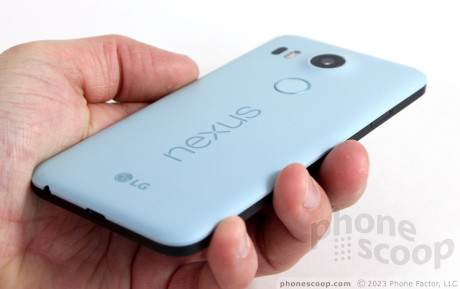
The 5X is just half of Google's new lineup of Nexus phones for 2015. This LG-made handset includes a fingerprint sensor, full HD screen, and 12-megapixel camera. It is among the first to run Android 6.0 Marshmallow. Here is Phone Scoop's in-depth review.
Hardware
Is It Your type?
Nexus phones are for a targeted set of people: those who want a "pure" Android experience and the promise of first access to new versions of Android from Google. The Nexus 5X — a would-be successor to the 2013 Nexus 5 — is a mid-range handset that ships with Android 6.0 Marshmallow. If you want to latest from Google at an affordable price, the 5X is for you.
Body
The Nexus 5X is one of two new Nexus smartphones from Google. The 5X is made by LG, while the 6P is made by Huawei. LG was tasked with designing a simpler, smaller handset than the 6P; in that respect, it mostly succeeded.
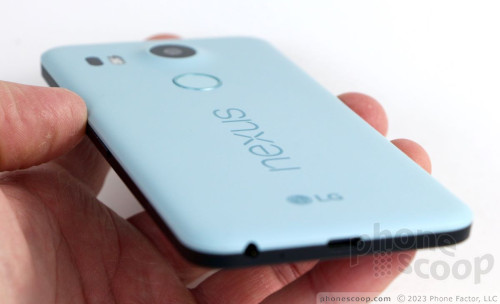
The Nexus 5X is clearly a unique design that LG made specifically for Google. It's bigger than the Nexus 5 and blessedly smaller than the (huge) Motorola-made Nexus 6. The design is rather simple, especially if you're looking at the front surface. The overall shape is more rectangular, as the phone ditches the curved top/bottom edges that defined the N4 and N5. About the most interesting aspect of the design is the vertically-arranged, circular camera module and fingerprint sensor on the back. That's not saying much.
The 5X is not made from fancy materials. The glass display panel is fitted into a plastic frame, which is in turn glued onto a soft-touch polycarbonate panel forming the rear. The front is black no matter which rear cover you select. The 5X rear panels are available in white, black, or quartz (sea foam green). Rich ordered himself the quartz version and I personally find it hideous.
I'm slightly disappointed with the quality of the phone. The plastic frame that surrounds the display feels cheap-ish to me, as do the buttons on the side of the phone. Moreover, the seam between the front and rear halves of the phone is a bit uneven. It's not at all horrible, but I've seen better quality in this price range, such as that of the Moto X.
Most people should have no problem using the 5X as far as the size is concerned. It could be a little smaller (i.e., less bezel around the screen), but it's not too large. The 5X is thin and light enough that it's a breeze to carry around. I had no trouble placing it into pockets.
The front of the phone is defined by the 5.2-inch display. There are two grilles on the front, giving the impression that the 5X has stereo speakers. It doesn't. The top grille covers the earpiece speaker and the bottom grille covers the microphone. The 5X has no buttons on front, and the user-facing camera is practically invisible.
The only two buttons are positioned on the right of the phone. The screen lock button is the smaller of the two. The buttons have good profiles and are easy to find/use, but I do not like the travel and feedback. The volume toggle, in particular, feels cheap and clackety. The SIM card tray is located on the left side of the phone. You'll find the headphone jack and USB Type-C charging port on the bottom.
A few words about Type-C. This connector is reversible, which makes it much easier to use; no more futzing about trying to figure out which way to insert the darned thing. It is fast, can send power in both directions, and represents the future of phone charging/data transfer. For now, however, accessories are limited. In fact, the phone comes with one Type-C cable and a wall wart that works only with the included Type-C cable. In other words, if you lose either the cable or charger, you're screwed. You may want to buy extra cables and/or chargers online.
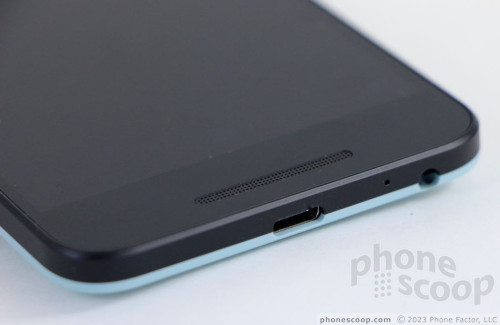
The 5X's rear panel is not removable and the battery is sealed in. That may be a dealbreaker for some. Like the bulk of Nexus devices, the 5X doesn't support expandable memory.
The camera module is housed in a raised bump. I like how the plastic is formed around the lens. Both it and the fingerprint sensor are each about the size of a dime. The dual LED flash and laser focus module are set off to one side.
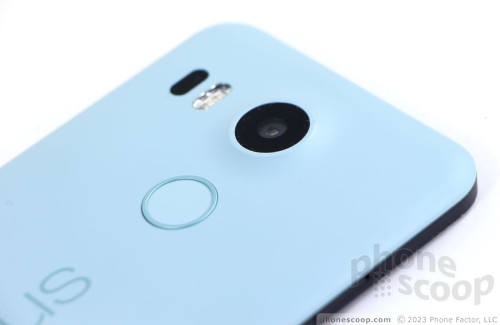
In all, the Nexus 5X is a decent piece of hardware, but it feels more like a $299 handset to me than a $379 handset.
Screen
The 5X's display measures 5.2 inches across the diagonal and offers full HD (1920 x 1080) resolution. I'm rarely ever disappointed by LG's LCD panels, and the 5X screen is another winner. The display is sharp, colors are accurate, and brightness is quite good. I was able to use the phone outside without any trouble. Viewing angles are solid, though there is a bit of brightness drop-off when it is tilted side-to-side. The 5X has a great screen for this class of device.
Signal
The Nexus 5X is sold unlocked with support for a wide range of networks. I tested it on AT&T's network in and around New York City and came away pleased with the results. The 5X remained connected to AT&T's network everywhere I took it. I was able to connect the majority of calls on the first dial. The phone sometimes required two attempts in poor coverage areas, but this is fairly typical. The 5X did not miss nor drop calls while I tested it, and it was able to keep calls connected when traveling down the highway. Data speeds were generally good, but they didn't blow me away. When used to browse the web, perform Google Searches, load Maps, and surf social networks, the 5X held its own when compared to other AT&T handsets. I thought app downloads could have been a bit faster over LTE.
Sound
Phone calls sound very good coming through the 5X's earpiece. I thought the majority of conversations were loud and clear. Volume output is strong enough for all but the noisiest spaces. I had no trouble maintaining conversations in my home, in the car, or in a diner during the lunch rush. Quality was impressive, though I experienced occasional distortion.
The speakerphone isn't quite as good. I thought volume was average at best; I'd prefer if the 5X speakerphone could be much louder. Clarity also suffered some from scratchiness. I could manage calls in a moving car, but the experience was spotty and inconsistent. Ringers and other alerts were always able to grab my attention. The vibrate alert is fine when receiving calls, but I often missed incoming text messages and other notifications.
Battery
The 5X delivers mediocre battery life. I was able to coax it from breakfast to bedtime on a few occasions, but only with reserved use (mostly WiFi, low screen brightness). Heavy use (all radios on, higher screen brightness, lots of media consumption) often left the 5X begging for mercy at about the 12-hour mark. That's not quite good enough. Android 6.0 Marshmallow has a few tools to help conserve power, but they have limited effectiveness. For example, Doze definitely helps the 5X retain its charge overnight, but App Standby had no measurable impact whatsoever. If you get into trouble, you can toggle on the battery saver mode, which reduces performance for the sake of power conservation.
The one bit of good news here is the phone supports rapid charging technology. According to Google, the 5X can ingest about 4 hours of uptime after about 10 minutes when plugged into a charger. Of course, with the USB Type-C plug, making sure you always have a charger available isn't as easy as with older phones.
Bluetooth, GPS, NFC, WiFi
All the 5X's radios performed as expected. The phone supports a fairly wide set of Bluetooth profiles, and I had no trouble pairing with PCs, speakers, headphones, and my car. Call quality through my car's hands-free system was about average. Clarity was decent, but volume suffered a bit. Music sounded good through a pair of Bluetooth headphones, but I've heard better.
Google Maps ran perfectly on the 5X, and the GPS radio was able to peg me in Maps quickly and accurately. It located me within 5 seconds, and was accurate to about 25 feet.
The NFC radio worked great for helping pair the 5X with Bluetooth devices, and also did its job when taking advantage of Tap & Go during initial setup. Rich used the 5X for several Android Pay transactions, and says the NFC radio performed flawlessly in that respect.
The WiFi worked very well.
Software
Lock Screen
The new lock screen in Android 6.0 Marshmallow is hardly different from the Lollipop lock screen. However, the Nexus 5X lets you use your fingerprint to unlock the phone.
The 5X suggests you register at least one fingerprint during the setup process. Google's Imprint — the software Google uses to manage your fingerprint — is lightning quick. Training the 5X to record a fingerprint consumed less than half the time it takes to do the same on the iPhone 6s or Galaxy S6. It's incredibly fast. Along with a fingerprint, the 5X suggests users set up a backup password, PIN, or pattern. I never needed to rely on them. The fingerprint reader is so fast, it unlocks the 5X in an instant. While first-generation fingerprint readers were often slow and inaccurate, the newer hardware reaching today's phones gets the job done in short order.
The information made available on the lock screen varies a bit depending in your preferences. Like Motorola's Ambient Display, the Nexus 5X will push monochrome alerts to the dark screen, such as the presence of new emails, new messages, or missed calls. This means you will occasionally see alerts when the phone is at rest. The screen won't wake when tapped like an LG G4, or if you wave your hand over it, like the Moto X.
Waking the screen with the lock button reveals the clock and a list of notifications below it. These notifications can be customized to reveal their content or not, such as the text of a message. There are shortcuts to Google voice search and the camera in the bottom corners. The Quick Settings screen is also accessible from the lock screen.
Home Screens
The Android 6.0 home screen — which, on Nexus handsets, means the Google Now Launcher — is more or less carried over directly from Android 5.0. A single home screen is active when you first boot the phone, and it has several shortcuts added to the dock at the bottom, and several folders chock full of Google's apps and services. As always, you can arrange these however you wish, add widgets and change wallpapers, and add more home screens. The app drawer is now arranged vertically, rather than horizontally, and places different app suggestions at the top of the screen. The settings menus are unchanged when compared to Lollipop.
The Google Now screen has been refreshed a little bit with smaller, more proactive cards. Now lets you customize your home/work locations, the types of sports, stocks, entertainment, and news you care about, as well as your favorite method of personal transportation (biking, driving, public transport.)
The Google Search bar is now more colorful (to match the new Google logo) and offers handy suggestions about voice commands you can give. As noted in our review of Android 6.0 Marshmallow, Google Search is able to handle far more voice-based queries and commands. You can easily open the calendar and set appointments and/or reminders; open music apps and listen to songs; and of course dictate messages. The 5X allows you to train it to respond to a catchphrase, which means you can say "OK Google" and search from just about any screen.
Now on Tap is one of the marquee features of Marshmallow. A long press of the home button will cause the 5X to perform a quick search based on what's on the display and offer information/suggestions as a result. Now on Tap is best used when discussing plans or seeking other, contextual information about people, places, locations, events, and so on. It works as long as there's something interesting on the screen that you want to know more about. Now on Tap performed just as well on the 5X as it did on the Nexus 5.
Speaking of performance, the 5X has a hexa-core processor (that's six cores). The Snapdragon 808 is joined by 2GB of RAM and either 16 or 32GB of storage. The 16GB option is rather paltry, especially considering the 5X's lack of memory card support. The 5X performs rather unevenly. As noted, the fingerprint reader is blink-and-you-missed it fast, and the home screens move fluidly and without issue. But I thought the camera app was slow, as were the Play Store and Google Photos apps. The 5X might have benefited from an octa-core design and another 1GB of RAM, but I suppose that's what the Nexus 6P is for.
Camera
The 5X doesn't have a dedicated camera button, but a double press of the lock button will rouse the camera from slumber. Like a teenager, the 5X's camera is slow to wake. You can also open the camera from the lock screen itself, or via home screen shortcut. The camera was never quick to spring open.
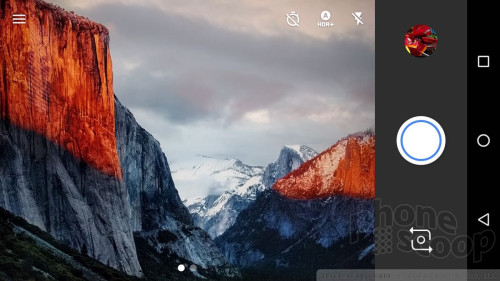
The camera has a fairly basic feature set. Controls are spread out all over the place. The shutter button, user-facing camera, and gallery are all positioned along the right side of the screen. There are simple tools along the top for setting a timer, setting HDR to on/off/auto, and setting the flash to on/off/auto.
There are four shooting modes: auto, photo sphere, panorama, and lens blur. The first three are old hat. Lens blur lets you create shots where the subject is sharp, but the rest of the image is out of focus (also called the bokeh effect). This shooting mode actually requires some technique, as you have to move the camera (not too fast!) while shooting the image. This allows the camera to gather some perspective data and then render the image. Rendering takes a solid 12 to 15 seconds; it's not fast. After the image has rendered, you can adjust the point of focus and how far out it spreads. I think Google's handset partners have produced easier-to-master bokeh tools that deliver dramatically superior results.
There are three ways to capture regular images: press the screen lock button, press the software shutter button, or press the screen first to focus and then press the shutter button. None of these methods is quick. The 5X takes time to focus no matter which approach you choose, which is odd given the laser-assist function that works so well on other LG phones. I obtained the best results by pressing the screen first to lock focus before pressing the shutter button. If you're trying to snag shots of fast-moving toddlers or friends zipping past on skateboards, forget it.
Need to shoot video? Swipe the screen and the 5X will jump to video mode. There aren't too many video options. You can shoot at 30 frames per second in 4K, 1080p, or 720p, or up to 120 frames per second (for slow motion results) in 1080p or 720p. That's about it.
Just for the heck of it, I downloaded and teste FV-5 from the Play Store. It, too, was slow to focus and capture images. I used the same FV-5 camera app on the Moto X, too, and it performed much faster on that handset. Clearly, the Nexus 5X is underpowered as far as the camera is concerned.
Photos/Video
Taken as a whole, the 12-megapixel camera of the 5X produces decent images. I definitely saw a range of problems here and there, but none of them were deal-breakers. The majority of images were sharp, and I didn't see any grain issues. I only noticed a few exposure issues, but they were in difficult situations (see the overblown house above the underexposed purple flowers). White balance was good throughout, with only one example below (hot air balloon) trending toward too warm.

I'd say most people will be happy enough to use the 5X as a daily shooter, but power users — which is often how Nexus owners are viewed — may be disappointed.
Don't bother shooting 4K video with the 5X. It's not that it doesn't produce good results, but with 16GB of storage (or even 32GB), that footage will munch down memory in short order. Moreover, it's useless to you without a 4K TV or monitor. Stick with the 1080p capture mode, which does well enough to satisfy the bulk of users. I was pleased with the 5X's video footage and think it will suffice as a daily shooter for regular Joes and power users alike.
Google Stuff
The Pure Android Experience offered by Nexus phones means you don't get any bloat, just lots of Google stuff. There are 29 apps installed on the 5X out of the box, which is about half as many as are typically packed onto phones sold by the carriers. The lack of bloatware and junk is one of the many appealing things about owning a Nexus handset.
Wrap-Up
No phone is perfect and every phone has compromises. The Google Nexus 5X from LG is a good phone, but not quite a great phone.
The hardware is adequate, but faces steep competition from Motorola and even some Chinese makers such as Huawei and Alcatel in terms of materials and quality. The screen is great, but battery life suffers somewhat; signal performance on AT&T was strong, but voice quality was never better than average; the camera software is often slow and frustrating, but it delivers usable photos.
Android 6.0 Marshmallow is by far the 5X's best feature — and Marshmallow isn't exclusive to the 5X. Google's latest operating system performed flawlessly on the 5X, and the Nexus Imprint fingerprint tool is great.
If you absolutely must own a Nexus handset for the software and prefer a smaller form factor, the 5X is really your only choice. The $379 price tag is nothing to complain about. The Nexus 6P isn't that much more at $499, but it is significantly larger. If you simply want the best phone $400 can buy, the Moto X is a better (if bigger) bet.

Comments
It really is sad
Then again... I just got my moto x through FedEx today and my roommate just ordered one a few hours ago (and his nexus 5 has a power button that keeps jamming).
You tried Google, barely... But you tried


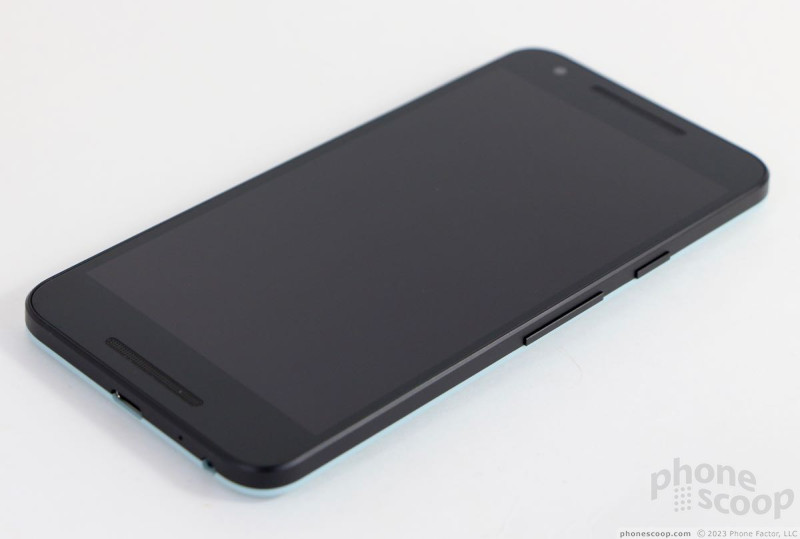
















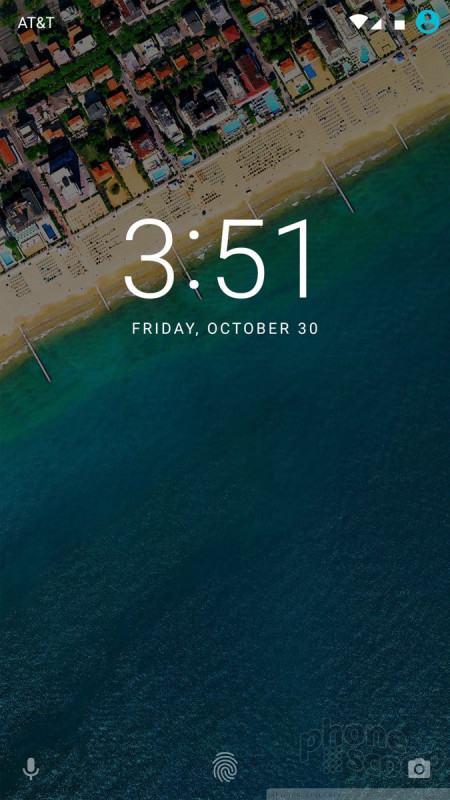



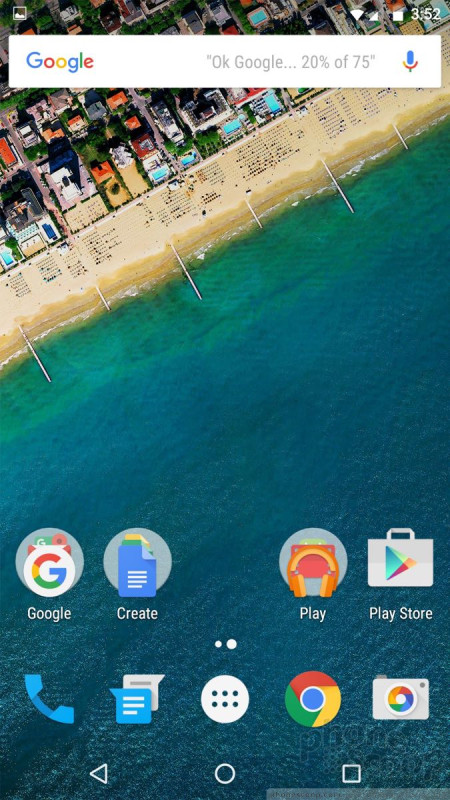




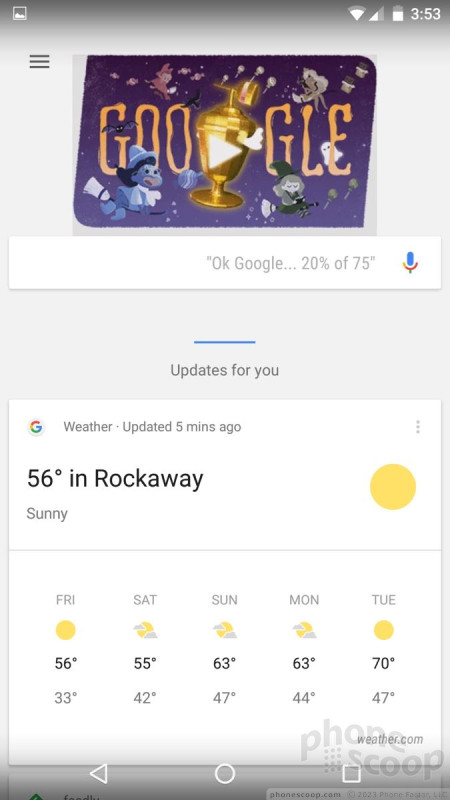










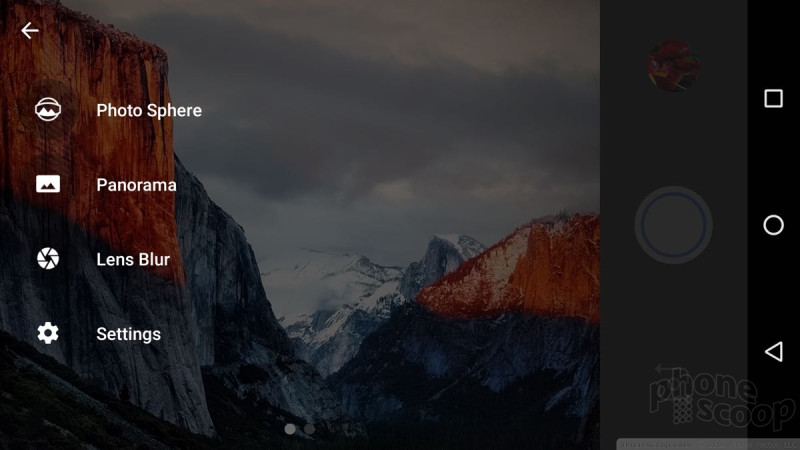


















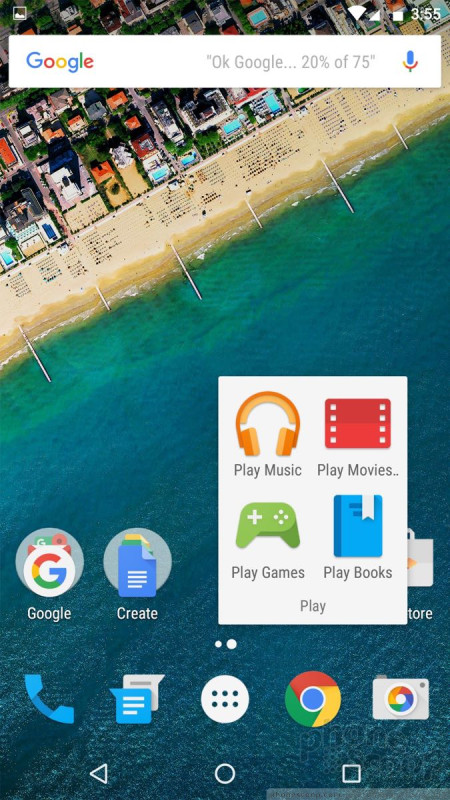



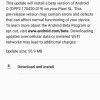 Google Pushes Minor Update to Android O Beta
Google Pushes Minor Update to Android O Beta
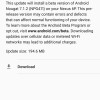 Google Pushes Second Beta of Android 7.1.2
Google Pushes Second Beta of Android 7.1.2
 Republic Wireless Improves Android Lineup
Republic Wireless Improves Android Lineup
 Google Releases Final Developer Preview of Android 7 Nougat
Google Releases Final Developer Preview of Android 7 Nougat
 Google Reveals When Nexus Phones Will Cease Receiving Android Updates
Google Reveals When Nexus Phones Will Cease Receiving Android Updates
 LG Nexus 5X
LG Nexus 5X




